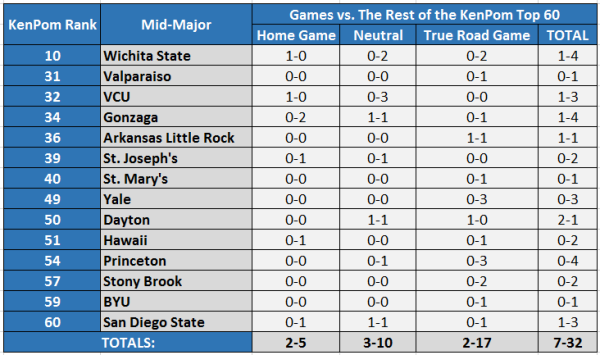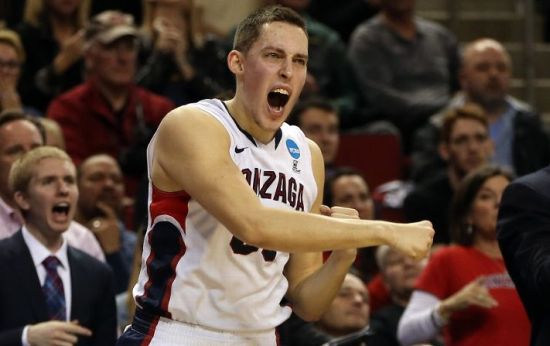The Mid-Major Disadvantage: The Power of the Power Conferences
Posted by Shane McNichol on February 25th, 2016For the first time in recent memory, Gonzaga is in jeopardy of missing the NCAA Tournament. Throughout a season in which the Zags began in the top 10, they have experienced a variety of miscues (home losses) and misfortunes (Przemek Karnowski’s injury) that have resulted in a spot squarely on the bubble. Their ups and downs this year will lead the upcoming HBO documentary following Mark Few’s team around this month to look less like Ballers and more like Game of Thrones (For those without a friend’s HBO Go password, find some new friends.)
In eight games against the KenPom top 60, Gonzaga has gone 1-7 with four of those losses coming at The Kennel. Conversely, the Bulldogs are a perfect 20-0 in the rest of their games. In determining their status on the bubble, the Zags are in a difficult spot because of a combination of zero signature wins without any corresponding bad losses. Gonzaga’s national brand name makes it unique in how it can schedule, but most other mid-major programs don’t get the chance to notch resume-building wins nearly as often as their power conference peers. Michigan, one of the Zags’ primary competitors on the bubble, will play 13 games against the top 60 this season, including six opportunities at home (five games against Big Ten teams). A different mid-major on the bubble cannot use multiple opportunities late in the season to enhance its resume — it can only avoid bad losses.
Small conference schools can point to their computer rankings and strength of schedules as much as they want, but they are seldom able to match résumés with the power conference giants. An analysis of the 14 mid-majors currently residing in the top 60 of the KenPom rankings (Wichita State, Valparaiso, St. Joseph’s, Gonzaga, Arkansas-Little Rock, St. Mary’s, VCU, Yale, Dayton, Hawaii, Princeton, Stony Brook, San Diego State, BYU) reveals that their collective shortage of quality wins appear to be as much about opportunity as competence. Much of the strength in their schedules has come from playing each other. The best teams from the Atlantic 10, Ivy League, and WCC of course all play each other in conference play (usually twice), while Princeton traveled to both St. Joseph’s and Stony Brook and Arkansas-Little Rock visited San Diego State. Outside of those games, this collection of teams has played the rest of the top 60 a total of only 39 times.

Furthermore, this group has only won an unimpressive-sounding seven times, but 82 percent of those games occurred away from home in hostile or neutral environments. That said, this year’s group of 14 is only 2-5 in front of the home crowd. Two of those losses belong to Gonzaga and the other three came at the hands of top five foes: Oklahoma (at Hawaii), Kansas (at San Diego State), and Villanova (at St. Joseph’s).
So how do you compare mid-major resumes with those of power conference teams in a fair manner? Colorado played three non-conference games against the top 60, going 1-2 in those games and ranking 251st nationally in its non-conference strength of schedule. Princeton, on the other hand, went on the road to play St. Joseph’s, Stony Brook, and Miami (FL), in addition to a game against Maryland in Baltimore — resulting in a 153rd-ranked non-conference schedule. They lost all four of those games — would Colorado have done any better? Another power conference bubble team like Syracuse gets the pleasure of daring six different top 60 opponents to win at the Carrier Dome, but the Princetons, Valparaisos and St. Mary’s of the world can only dream of repeated chances like that.
The Selection Committee has long known that not all wins are created equally, but there should be some sort of qualitative bubble bonus given to mid-majors that challenge themselves with road games they’re unlikely to win. The scarcity of such games available to those programs makes them more meaningful in a vacuum, but conference affiliation (something that the committee claims does not matter in its analysis) should not have such a deleterious effect on the little guys while propping up the bigger ones. It will be interesting to see how this year’s group is evaluated given that none of them are nearly as strong on paper as they have been in the past.














































